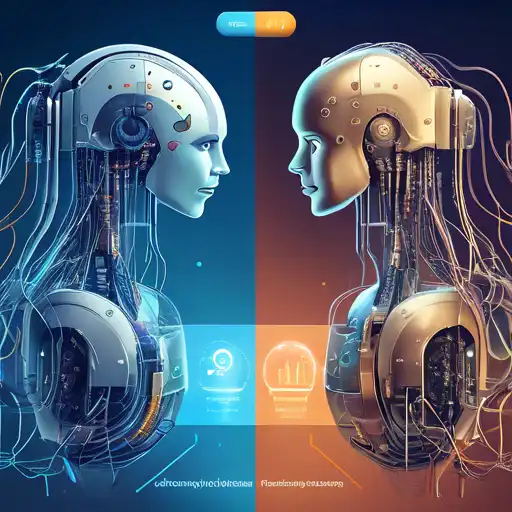Introduction to Machine Learning and Deep Learning
In the realm of artificial intelligence (AI), Machine Learning (ML) and Deep Learning (DL) are two of the most talked-about technologies. While they are often used interchangeably, they have distinct differences that set them apart. This article delves into the key differences between ML and DL, helping you understand which technology might be best suited for your needs.
What is Machine Learning?
Machine Learning is a subset of AI that enables systems to learn and improve from experience without being explicitly programmed. It focuses on the development of algorithms that can access data and use it to learn for themselves.
What is Deep Learning?
Deep Learning, on the other hand, is a subset of ML that uses neural networks with many layers (hence the 'deep') to analyze various factors of data. It mimics the workings of the human brain in processing data for use in detecting objects, recognizing speech, translating languages, and making decisions.
Key Differences Between Machine Learning and Deep Learning
1. Data Dependency
Deep Learning requires large amounts of data to understand and perform tasks accurately, whereas Machine Learning can work with smaller datasets.
2. Hardware Requirements
DL models are computationally intensive and often require powerful hardware like GPUs for training, unlike ML models that can be trained on less powerful machines.
3. Feature Engineering
In ML, feature extraction is done manually by experts, but in DL, the model tries to learn these features automatically from the data.
4. Interpretability
ML models are generally easier to interpret and understand than DL models, which are often considered 'black boxes' due to their complexity.
5. Training Time
DL models take longer to train due to the complexity of the algorithms and the volume of data, while ML models can be trained relatively quickly.
Choosing Between Machine Learning and Deep Learning
The choice between ML and DL depends on the specific requirements of your project. If you have limited data or need quick results, ML might be the way to go. However, for complex problems like image and speech recognition, DL could be more effective.
Applications of Machine Learning and Deep Learning
- Machine Learning: Spam detection, recommendation systems, fraud detection.
- Deep Learning: Autonomous vehicles, voice assistants, medical diagnosis.
Both technologies have their place in the future of AI and technology. Understanding their differences is crucial for leveraging their strengths in various applications.
For more insights into AI technologies, check out our articles on Artificial Intelligence and Data Science.
